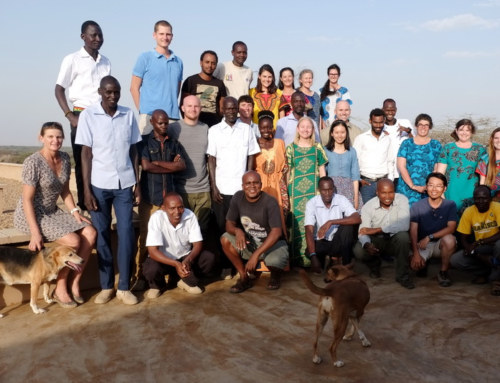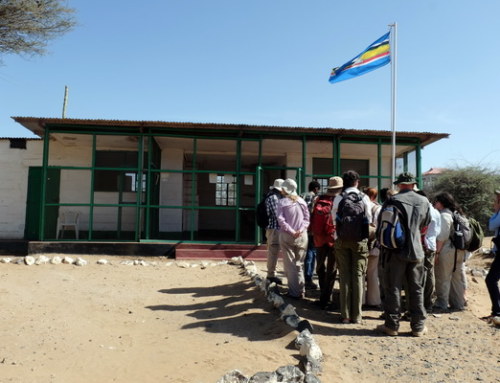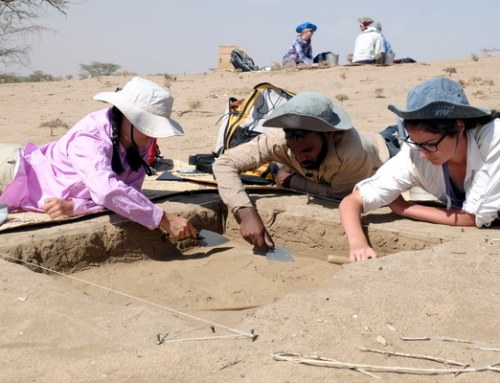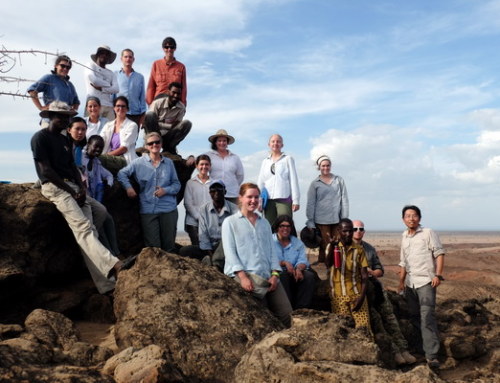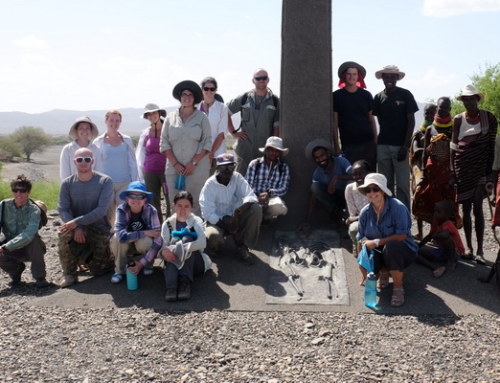We humans are fascinated with food! We love food so much that the question we ask most frequently is not where we come from, but perhaps what to eat for dinner! Luckily, the Origins Field School students don’t have to worry about this question because we are provided with healthy and delicious foods every day. But what is on the menu for other animals? How can we use them to infer the diet of their fossil relatives? The students had a chance to observe what the domesticated herbivores eat in the Turkana dryland.
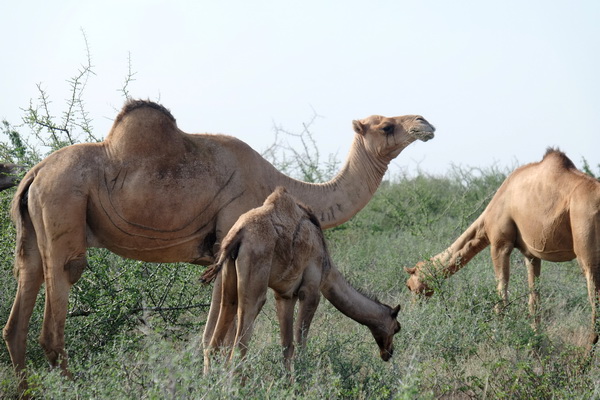
Dry-adapted animals visiting the TBI Ileret campus
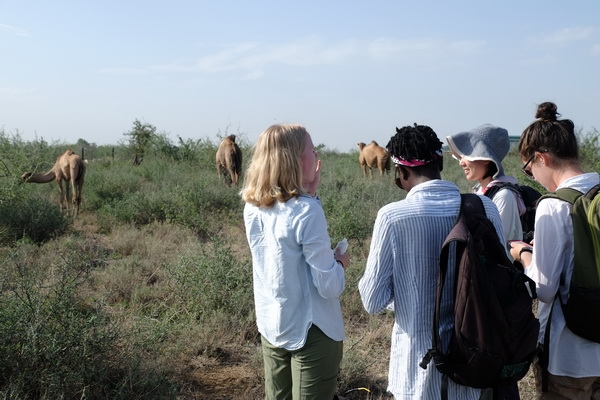
Amanda, Esther, Yishan and Nicole watching a herd of camels
Living in the Turkana Basin as a herbivore is not an easy thing! It is very dry most of the year and the plants here have many different ways to protect themselves from being eaten. For example, the trees and bushes have thorns on their branches that deter most intruders. Grasses have tough leaves and stems that are packed with microscopic crystals called phytoliths, which wear down the teeth of the animals that eat them very fast. As a results, herbivores that eat mostly leaves (known as browsers) have narrow snouts and long tongues, which allow them to approach leaves deep in between the thorns. The ones that eat mostly grasses (known as grazers) have very tall teeth that grow continuously, which can withstand the fast tooth wear rate of a grassy diet.
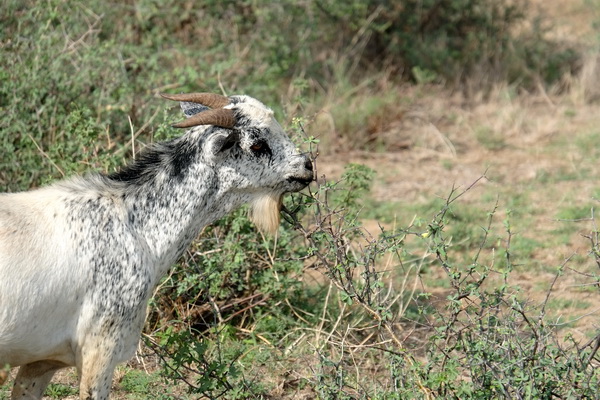
The goat is a browser, a leaf specialist.
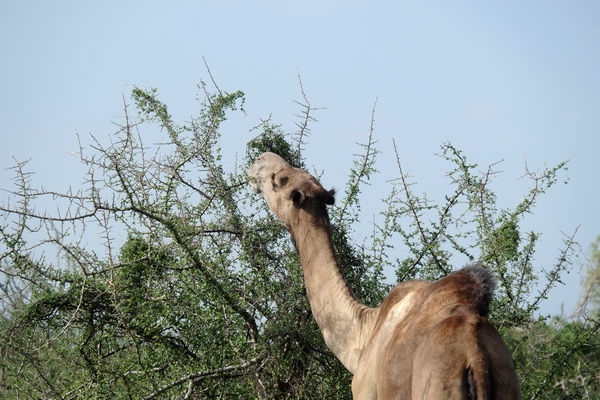
Like the goat, the camel also eats a lot of leaves, but from a much higher level
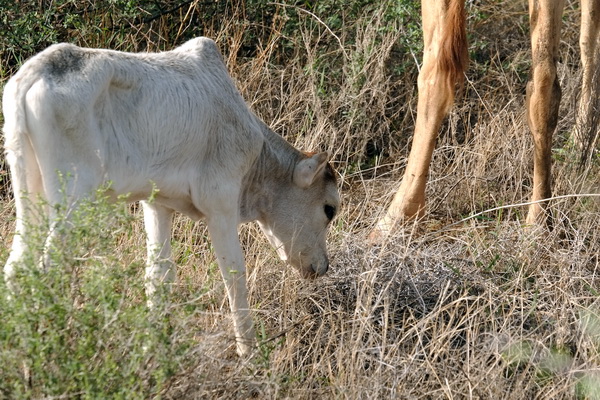
The cattle is a grazer that prefers a grassy diet. This baby calf is following its mom
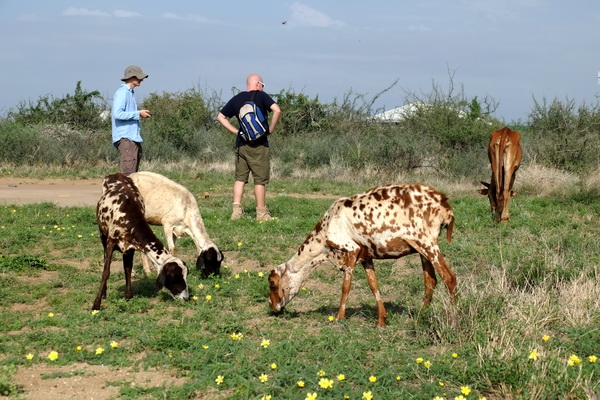
Like the cattle, the sheep is a grazer
Body size can be another limiting factor for animals that live in a stressful environment such as the Turkana dryland. A larger body retains water very well and requires less energy per pound of body weight. Large animals can also afford to eat foods of much lower quality because of a slower digestion. On the other hand, a smaller body needs less food and water per day, but requires foods of higher quality due to a higher metabolic rate. Such difference in the physiology of big and small animals is known as the effect of body size. Given the differences, large animals often do not compete with small animals in the same ecosystem, which is also known as niche partitioning. Body size evolution is a common theme in evolutionary studies and a topic that the students are investigating in the Paleontology module.
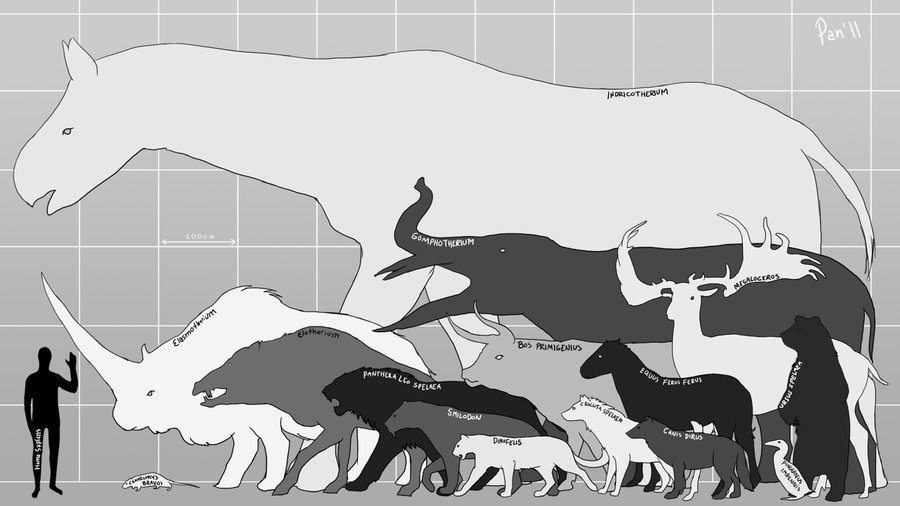
Body size comparison of Cenozoic mammals. Courtesy of Panimated
Chewing is the most common way of food processing among herbivorous mammals. Indeed, most herbivores spend a lot of time feeding and chewing in order to gain enough energy to fuel their hungry bodies. The ruminants take this even further by chewing their food twice! It is not surprising that an animal’s chewing rate is also correlated with body size. For example, a small animal, such as a rabbit, chews much faster than a large animal, such as a cow. By observing how fast they chew, our Field School students are investigating the relationship between chewing rate and body size. The feeding data generated from this exercise will be used in the research projects of this module. And of course, watching a variety of animals munching and chomping on leaves peacefully is always a great joy!
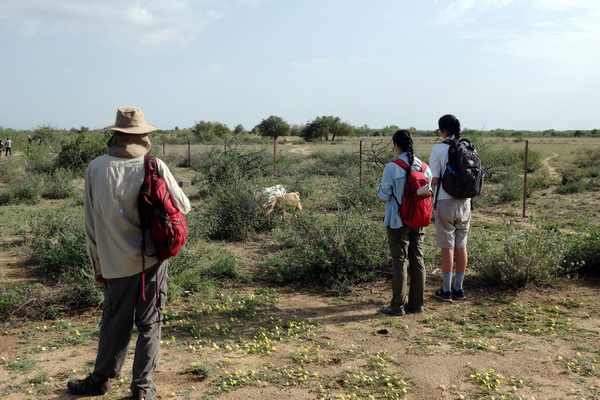
Andrew, Maria and Izzy gathering feeding data from goats
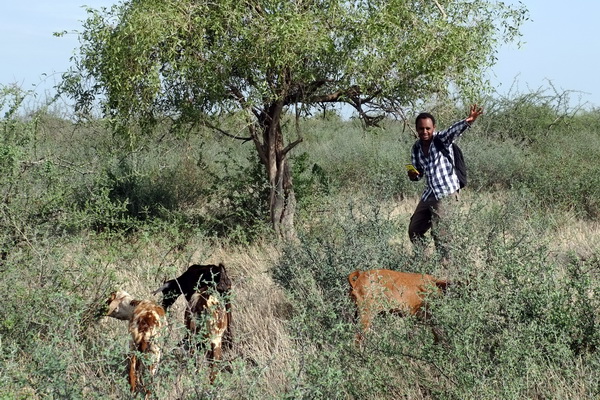
Yared counts five chews in a feeding bout of the goat
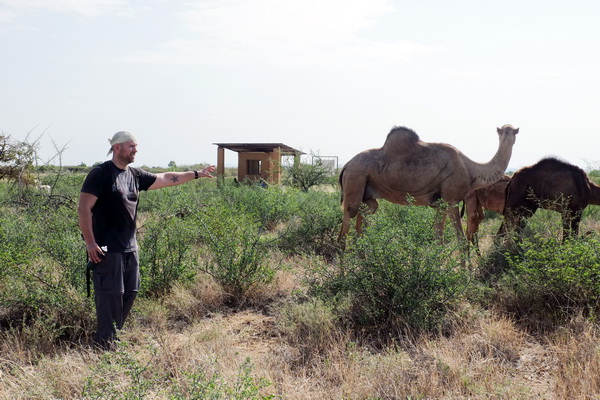
Tom is excited about the camels
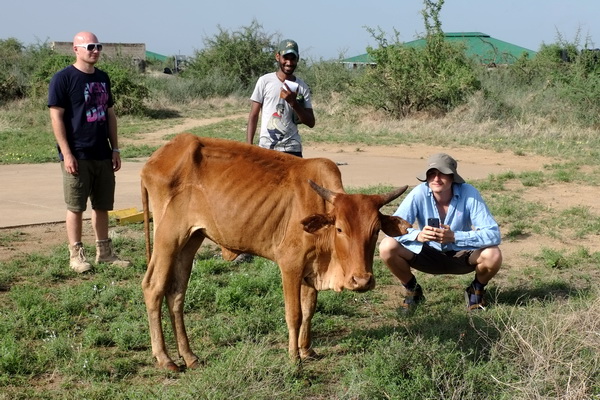
A calf ignores Felix, Goitom and Charlie’s attention
Our field school students have been working very hard on their research projects. Stay tuned for their exciting results in the next blog!
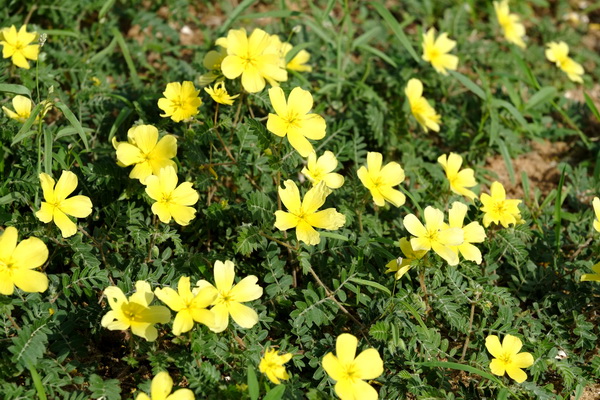
Flowers at TBI Ileret after heavy rains
Student in the Spotlight

Hello my name is Amanda and I am from Stony Brook University and on my left is my friend Yishan from University College London. According to my friend I am a cheetah due to the spotted kanga (an article of Kenyan clothing) that I wear frequently. She has since proceeded to dub herself the world’s only living Gigantopithecus and given each of my new friends at TBI their own spirit animal if you will. Many of which are extinct creatures from the evolutionary record that we were unfamiliar with before taking classes here at TBI. We’ve learned a lot in our time here but there’s always a little room for some added fun, and besides there are still students for whom we have yet to determine a spirit animal for, extinct or otherwise.
Animal in the Spotlight
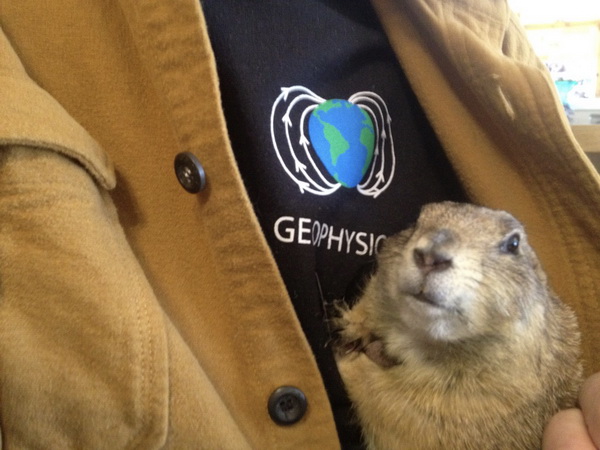
Bob Raynolds’ prairie dog Chicky. Photo credit: Bob Raynolds

